|
| |
|
Registration Is Now
Closed!
SoC Conference Presenters'
Bios & Abstracts
17th International System-on-Chip
(SoC)
Conference, Exhibit & Workshops
The Theme for This Year’s
Conference Is “Silicon Engineering The Future."
|
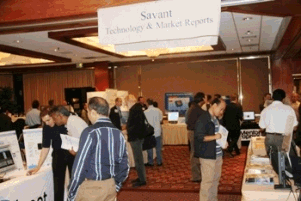 |
To present and/or exhibit at this
highly-targeted International System-on-Chip (SoC) Conference, please contact:
949-981-1837 or SoC.Conf.Update@Gmail.com
a
Click Here To
Download The UCI Campus Map
Directions &
Parking for Calit2 Building at the University of California, Irvine (UCI)
Platinum Sponsors
| |
|
|
|
|
|
|
|
Schedule & Program Summary
|
|
|
|
|
SoC Conference Day 1 |
Wednesday, October 16, 2019
UCI - Calit2 Building |
8:00 am - 7:00 pm |
|
|
|
SoC Conference Day 2 |
Thursday, October 17, 2019
UCI - Calit2 Building |
8:00 am - 6:30 pm |
|
|
|
Tabletop Exhibition,
SoC Student Design Contest &
Reception (at 6 pm) - Open to Public. |
Wednesday, October 16, 2019
UCI - Calit2 Building |
2:00 pm - 7:00 pm |
|
| |
|
|
|
|
|
|
|
|
|
|
|
|
Day
One Wednesday October 16, 2019
SoC Conference Program Agenda* |
|
|
|
Savant
Company Inc.

SoC Conference
 |
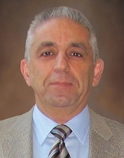 Farhad
Mafie, SoC Conference Chairman. Farhad
Mafie, SoC Conference Chairman.
Farhad Mafie, President and
CEO of Savant Company Inc., has over 25 years of experience in high-tech
industries including semiconductor and computer businesses; additionally, he
has more than 15 years of university-level teaching experience. A seasoned
technical executive with extensive global experience in marketing, sales,
and engineering. He enjoys developing business plan and go-to-market
strategies for innovative and disruptive technologies, deal making,
developing strategic alliances and partnerships.
In 2017, he became the CEO of Handycash Inc., a newly formed startup in
Switzerland, developing an innovative mobile payment system based on
Blockchain technology that will be launched in 2020.
For almost six years at
Microsemi Corporation, as Vice President of Worldwide Product Marketing and
Corporate Communications teams (in US, EU, India, and China), Farhad
developed and managed the entire Microsemi’s worldwide outbound and inbound
marketing strategies and programs; and worked directly with executive team
on M&A projects and successfully integrating over 22 acquired companies.
Farhad is also the former Vice
President of Marketing/Business Development and Technical Sales Engineering
at Toshiba America Electronic Components, Inc. He was responsible for
marketing the entire Toshiba standard ICs products in North America, as well
as engineering development for Toshiba's Embedded and Digital Consumer
products based on ASSP and SoC models.
Farhad has worked at Lucent
Technologies on marketing communications ICs, Toshiba Information Systems on
product definition for Toshiba's notebooks PCs and handheld products, Unisys
on designing new processors and computer systems, Ocean Scientific on
designing medical instrumentations, and MSI Data on designing data
collection products. He has a Master of Science and a Bachelor of Science
degree in Electronic Engineering from California State University,
Fullerton.
In 2003, Farhad designed,
developed, and launched the annual Internationals System-on-Chip (SoC)
Conference, Exhibits, and Workshops
http://www.socconference.com. For two exciting days, this annual
international Conference brings the most innovative and groundbreaking
Chip-related technologies to its targeted audience. As the SoC Conference
Chairman, he has driven the Conference leading-edge program at UC Irvine for
the past 16 years.
In 2019, Blockchain Technology
Summit was launched to bring the latest blockchain-related technologies,
applications and startups in an exciting and educational Summit for
worldwide audience http://www.blockchaintechnologysummit.com.
Farhad is an author and a
translator. In 2003, he published the biography of Iranian poet and Nobel
nominee who lived in exile, Nader Naderpour (1929-2000), Iranian Poet,
Thinker, Patriot. Farhad is also Editor-in-Chief for the CRC Press SoC
Design and Technologies Book Series, which includes (1) Low-Power NoC for
High-Performance SoC Design and (2) Design of Cost-Efficient Interconnect
Processing Units.
Farhad is a member of two UCI
Advisory Committees: Communication System Engineering and Embedded System
Engineering Certificate Programs. He is also the chair of IEEE Orange County
Solid-State Circuits Society (SSCS), as well as IEEE Orange County
Entrepreneurs' Network (OCEN).
|
|
|
|
Georgia Institute of
Technology

|
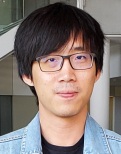
Muya Chang, PhD candidate in the department of Electrical and Computer
Engineering and Masters in the department of computer science. Georgia Institute of Technology.
“Discrete and Continuous Time Dynamical Systems for Solving Optimization
Problems.”
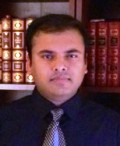 Professor
Arijit Raychowdhury, ON Semiconductor Junior Professor, Associate Professor,
School of ECE, Georgia Institute of Technology. Professor
Arijit Raychowdhury, ON Semiconductor Junior Professor, Associate Professor,
School of ECE, Georgia Institute of Technology.
Abstract: The explosion of big-data problems arising in statistics, machine
learning (ML), image processing, 5G systems and other related areas have
accelerated the development of hardware that rely on data-flow architectures
and near-memory processing to address the memory-bottleneck. Looking beyond
the success of neural network (NN) accelerators for classification, we
recognize a growing need for solving complex optimization problems, which
arise in all areas of signal processing such as ML model-training,
computational imaging (medical, optical and hyper-spectral),
resource-allocation in 5G massive MIMO networks and solving inverse problems
such as LDPC decoding. In this talk, I will describe our recent work on
hardware design for solving distributed optimizations. I will talk about the
algorithmic foundations as well as circuit-architectures and programming
models for solving large scale optimizations through local, iterative
computation and near-neighbor communication. I will end the talk with our
ongoing work on solving non-convex and combinational optimization problems
and demonstrate certain analog, dynamical systems that have strong
properties to solve such complex problems.
Bio: Muya Chang is a
dual-degree grad student at Georgia Institute of Technology, currently
pursuing his PhD in the department of Electrical and Computer Engineering
and Masters in the department of computer science. Before coming to Georgia
Tech in 2016, he received his Bachelor of Science degree in the department
of Electronics Engineering from National Chiao Tung University in July 2014.
He is the recipient of 2019 Qualcomm Innovation Fellowship Award and and
Chih Foundation Graduate Student Research Publication Award. His current
research interests include energy-efficient hardware design for signal
processing, machine learning and optimizations.
Bio: Arijit Raychowdhury is
currently a Professor in the School of Electrical and Computer Engineering
at the Georgia Institute of Technology where he joined in January 2013. He
is currently the co-director of the Georgia Tech Quantum Alliance. From 2013
to July 2019 he was an Associate Professor and held the ON Semiconductor
Junior Professorship in the department. He received his Ph.D. degree in
Electrical and Computer Engineering from Purdue University (2007) and his
B.E. in Electrical and Telecommunication Engineering from Jadavpur
University, India (2001). His industry experience includes five years as a
Staff Scientist in the Circuits Research Lab, Intel Corporation, and a year
as an Analog Circuit Researcher with Texas Instruments Inc. His research
interests include low power digital and mixed-signal circuit design, design
of power converters, sensors and exploring interactions of circuits with
device technologies. His significant contributions to the semiconductor
industry include the design of the world’s first adaptive echo-cancellation
network for integrated DSLs (TI) and embedded world-line boosting for SRAM
arrays (Intel). Dr. Raychowdhury holds more than 25 U.S. and international
patents and has published over 170 articles in journals and refereed
conferences. He has served on the Technical Program Committees of VLSI
Symposium, CICC, DAC, ICCAD, ISLPED, DATE. He was the Associate Editor of
the IEEE Transactions on Computer Aided Design from 2013-2018 and the Editor
of the Microelectronics Journal, Elsevier Press from 2013 to 2017. He has
also been a guest editor for multiple IEEE and ACM journals. He has also
taught many short courses and invited tutorials at multiple conferences,
workshops, industries and universities. He is the winner of IEEE/ACM
Innovator under 40 award; the NSF CISE Research Initiation Initiative Award
(CRII), 2015; Intel Labs Technical Contribution Award, 2011; Dimitris N.
Chorafas Award for outstanding doctoral research, 2007; the Best Thesis
Award, College of Engineering, Purdue University, 2007; SRC Technical
Excellence Award, 2005; Intel Foundation Fellowship, 2006; NASA INAC
Fellowship, 2004; the Meissner Fellowship 2002. He and his students have won
eleven best paper awards over the years. Dr. Raychowdhury is a Senior Member
of the IEEE.
|
|
|
|
Intel
 |
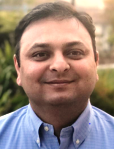 Sujal
A Vora, Senior Principal Engineer, Datacenter SoC Design Power and
Performance Lead at Intel Corporation. Sujal
A Vora, Senior Principal Engineer, Datacenter SoC Design Power and
Performance Lead at Intel Corporation.
“Server SoC Power-Thermal
Trends and Challenges.”
Abstract: This presentation
will demonstrate Power and Thermal related challenges for future Intel
server SoC designs. Server Thermal Design Power (TDP) continues to increase
each product generation due to multiple factors including core count growth,
IO growth, and performance demands. Even with process, design and
architecture level improvements including Power management features, overall
TDP growth comes with thermal and electrical challenges for both the CPU die
as well as the platform. Presentation will highlight history and future of
Server TDP, core count growth and the challenges that are ahead of us to
incrementally improve socket level performance, per core performance, and
performance per Watt over future generation of server products. On new
technology and thermal side, presentation will highlight 3D stacking of
active silicon and on-package 3D stacked memory (HBM) create major thermal
challenges for an SOC to keep each die temperature under its
reliability/functionality limits. Additionally, thermal challenge arises for
Datacenter SoC as we shrink the die every process generation and add new
architectural features plus new usage models with new workloads and
application. Finally we will conclude with some mitigations and innovations
in action.
Bio: Sujal earned his master’s degree in Electrical Engineering from Wright
State University in 2000 and joined Intel the same year as design engineer
for Itanium Processor. In his 18-year career span, Sujal has contributed to
successful productization of more than 15 server CPUs for Intel. Sujal is
currently a Director and Senior Principal Engineer at Intel in Silicon
Engineering Group where he leads Power-Thermal-Binsplit and
Power-performance for datacenter products. Beyond Intel, Sujal serves as a
visiting faculty member at Stanford University, teaching masters classes on
Silicon Debug and Power-Thermal-Binning concepts and industry application.
|
|
|
|
Morning Break |
Morning Break |
|
|
|
Intel
Keynote
 |
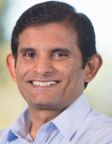 Sailesh
Kottapalli, Intel Senior Fellow, Intel Architecture, Graphics and Software Sailesh
Kottapalli, Intel Senior Fellow, Intel Architecture, Graphics and Software
Chief Architect, Datacenter Processor Architecture.
“Computing Infrastructure
in Data-Centric Era.”
Abstract: Computing
infrastructure is increasingly influenced by the need to manage the
exponential growth in data. The computing infrastructure needs to move this
massive amount of data, store it and harvest it by processing for value
added insights that drive business value by delivering to customer’s needs.
This is driving changes across the entire spectrum of Computing,
interconnects, memory and storage as well as security requirements. In
addition, how we deliver that value across architecture, SW, design, process
and packaging is also changing. This talk will outline a number of trends as
a result and the specific solutions and SoC architecture to address these
trends.
Bio: Sailesh Kottapalli, Intel Sr. Fellow, Chief Architect, Datacenter
computing. Sailesh is a Senior Fellow at Intel. He is the chief architect
for all the datacenter processors at Intel and leads the architecture for
the Interconnect domain at Intel. He has over 23 years of contributions on
the datacenter processors and has led the architecture for a number of
highly successful Xeon processors.
|
|
|
|
University of Texas at Austin
Keynote

|
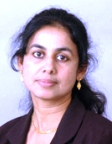 Lizy
Kurian John, Ph.D., P.E. The Cullen Trust for Higher Education Endowed
Professor in Engineering No.3, IEEE Fellow, Department of Electrical and
Computer Engineering, University of Texas at Austin. Lizy
Kurian John, Ph.D., P.E. The Cullen Trust for Higher Education Endowed
Professor in Engineering No.3, IEEE Fellow, Department of Electrical and
Computer Engineering, University of Texas at Austin.
“Machine Learning for Performance and Power Modeling / Prediction."
Abstract: Estimating the power and thermal characteristics of SoCs is
essential for designing its power delivery system, packaging, cooling, and
power/thermal management schemes. Power models that estimate the power
consumption of each functional unit/hardware component from first principles
are slow and tedious to build. Machine learning can be used to create power
models that are fast and reasonably accurate. Machine learning can also be
used to calibrate analytical models that estimate power. In this talk, I’ll
present some examples of performance and power modeling using machine
learning. Another application for machine learning has been to create max
power stressmarks. Manually developing and tuning so called stressmarks is
extremely tedious and time-consuming while requiring an intimate
understanding of the processor. In our past research, we created a framework
that uses machine learning for the automated generation of stressmarks. In
this talk, the methodology of the creation of automatic stressmarks will be
explained. Experiments on multiple platforms validating the proposed
approach will be described. Yet another application for machine learning is
in cross-platform performance and power prediction. If one model is slow to
run real-world benchmarks/workloads, is it possible to predict/estimate the
performance/power by using runs on another platform? Are there correlations
that can be exploited using machine learning to make cross-platform
performance and power predictions? A methodology to perform cross-platform
performance/power predictions will be presented in this talk.
Bio: Lizy Kurian John is Cullen Trust for Higher Education Endowed Professor
in the Electrical and Computer Engineering at the University of Texas at
Austin. She received her Ph. D in Computer Engineering from the Pennsylvania
State University. Her research interests include workload characterization,
performance evaluation, memory systems, reconfigurable architectures, and
high performance architectures for emerging workloads. She is recipient of
many awards including The Pennsylvania State University Outstanding
Engineering Alumnus 2011, the NSF CAREER award, UT Austin Engineering
Foundation Faculty Award, Halliburton, Brown and Root Engineering Foundation
Young Faculty Award 2001, University of Texas Alumni Association (Texas
Exes) Teaching Award 2004, etc. She has coauthored books on Digital Systems
Design using VHDL (Cengage Publishers, 2007, 2017), a book on Digital
Systems Design using Verilog (Cengage Publishers, 2014) and has edited 4
books including a book on Computer Performance Evaluation and Benchmarking.
In the past, she has served as Associate Editor of IEEE Transactions on
Computers, IEEE Transactions on VLSI, IEEE Computer Architecture Letters,
ACM Transactions on Architecture and Code Optimization, and IEEE Micro. She
is currently the Editor-in-Chief of IEEE Micro. She holds 12 US patents and
is an IEEE Fellow (Class of 2009).
|
|
|
|
Lunch |
Lunch |
|
|
|
Panel







|
Panel:
“RISC-V Realities, Opportunities and Challenges in the Complex and
Crowded CPU Market.
Moderator: Farhad Mafie, SoC Conference Chairman.
Panelists:
1. Dr. Rob Aitken, R&D Fellow and technology lead for Arm Research, ARM.
2. Nader Bagherzadeh, Professor (Joint Appointment), Electrical Engineering
and Computer Science & Donald Bren School of Information and Computer
Science. University of California, Irvine.
3. Grant Martin, Distinguished Engineer, Tensilica R&D - Cadence Design
Systems.
4. Dr. Emerson Hsiao, Senior VP, Andes Technology USA Corp.
5. Wayne Radochonski, CTO, Pixilica.
6. Gerald D. Zuraski Jr., Senior Principal Engineer, Austin R&D Center,
Samsung.
|
|
|
|
University of California,
Irvine
(UCI)
 |
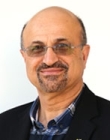 Nader
Bagherzadeh, Professor (Joint Appointment), Electrical Engineering and
Computer Science & Donald Bren School of Information and Computer Science. Nader
Bagherzadeh, Professor (Joint Appointment), Electrical Engineering and
Computer Science & Donald Bren School of Information and Computer Science.
Panelist.
Bio: Dr. Nader Bagherzadeh has
been involved in research and development in the areas of computer
architecture, reconfigurable computing, VLSI chip design, and computer
graphics. For almost ten years ago, he was the first researcher working on
the VLSI design of a Very Long Instruction Word (VLIW) processor. Since
then, he has been working on multithreaded superscalars and their
application to signal processing and general purpose computing. His current
project at UC, Irvine is concerned with the design of coarse grain
reconfigurable pixel processors for video applications. The proposed
architecture, called MorphoSys, is versatile enough to be used for digital
signal processing tasks such as the ones encountered in wireless
communications and sonar processing. DARPA and NSF fund the MorphoSys
project (total support $1.5 million). Dr. Bagherzadeh was the Chair of
Department of Electrical and Computer Engineering in the Henry Samueli
School of Engineering at University of California, Irvine. Before joining
UC, Irvine, from 1979 to 1984, he was a member of the technical staff (MTS)
at AT&T Bell Laboratories, developing the hardware and software components
of the next-generation digital switching systems (#5 ESS). Dr. Bagherzadeh
holds a Ph.D. in computer engineering from The University of Texas at
Austin. As a Professor, he has published more than a hundred articles in
peer-reviewed journals and conference papers in areas such as advanced
computer architecture, system software techniques, and high performance
algorithms. He has trained hundreds of students who have assumed key
positions in software and computer systems design companies in the past
twelve years. He has been a Principal Investigator (PI) or Co-PI on more
than $2.5 million worth of research grants for developing next-generation
computer systems for solving computationally intensive applications related
to signal and image processing.
|
|
|
|
Samsung
 |
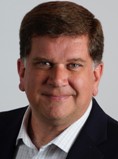 Gerald
D. Zuraski Jr. Senior Principal Engineer, Austin R&D Center, Samsung. Gerald
D. Zuraski Jr. Senior Principal Engineer, Austin R&D Center, Samsung.
Panelist.
Bio: Gerald D. Zuraski Jr. is
a Senior Principal Engineer with Samsung, Austin, TX, USA, working as a Lead
Architect for future cores. His research interests include CPU
microarchitecture, GPU microarchitecture and machine learning. He received
the B.S. degree in electrical engineering from Rensselaer Polytechnic
Institute, Troy, NY, USA in 1992.
|
|
|
|
ARM

|
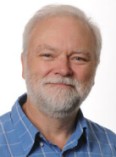 Dr.
Rob Aitken, R&D Fellow and technology lead for Arm Research, ARM. Dr.
Rob Aitken, R&D Fellow and technology lead for Arm Research, ARM.
Panelist
Bio: Rob
Aitken is an Arm Fellow and technology lead for Arm Research. He is
responsible for technology direction of Arm research, including identifying
disruptive technologies, monitoring the global technology landscape, and
coordinating research efforts within and outside of Arm. His role includes
developing strategic relationships with universities, consortia, and other
key participants in the global research community. His research interests
include emerging technologies, memory design, design for variability,
resilient computing, and statistical design. He has published over 80
technical papers on a wide range of topics including impacts of technology
scaling, statistics of memory bit cell variability and the use of static
current monitoring as a circuit testing and diagnostic mechanism. He holds
over 30 US patents. Dr. Aitken joined Arm as part of its acquisition of
Artisan Components in 2004. Prior to Artisan, he worked at Agilent and HP.
He has given keynote addresses, tutorials and short courses at conferences
and universities worldwide. He holds a Ph.D. from McGill University in
Canada. Dr. Aitken is an IEEE Fellow, and served as General Chair for the
2019 Design Automation Conference. |
|
|
|
Cadence Design Systems
 |
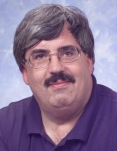 Grant
Martin, Distinguished Engineer, Tensilica R&D - Grant
Martin, Distinguished Engineer, Tensilica R&D -
Panelist.
Bio: Grant Martin has been a
Distinguished Engineer at Cadence, San Jose for 6 years. Before that he was
a Chief Scientist for Tensilica. in Santa Clara, California for 9 years,
prior to its acquisition by Cadence in April 2013. Earlier in his career,
Grant worked for Burroughs in Scotland for 6 years; Nortel/BNR in Canada for
10 years; and Cadence Design Systems for 9 years (first round), eventually
becoming a Cadence Fellow in their Labs. He received his Bachelor's and
Master's degrees in Mathematics (Combinatorics and Optimisation) from the
University of Waterloo, Canada, in 1977 and 1978. Grant is a co-author or
co-editor of eleven books dealing with SoC design, SystemC, UML, modelling,
EDA for integrated circuits and system-level design, including the first
book on SoC design published in Russian. His last book, the second edition
of the EDA Handbook,, was published by Taylor and Francis/CRC Press in 2016
He is a co-editor of the Springer Embedded Systems Series. His particular
areas of interest include configurable, extensible, processors, IP-based
design of system-on-chip, platform-based design, DSPs and their application
to many design domains including audio, video, communications and AI. Grant
is a Senior Member of the IEEE. Dr. Hsiao has an
extensive background in the ASIC and IP industry. Prior to joining Andes, he
worked at Kilopass Technology as the VP of Marketing. Dr. Hsiao previously
held the General Manager position for Faraday Technology USA, where he spent
several years in field application in various locations including Taiwan,
Japan and USA. Dr. Hsiao worked at UC Santa Barbara as a visiting scholar
prior to Faraday. Dr. Hsiao received his Ph.D degree in Electrical
Engineering from National Taiwan University.
|
|
|
|
Pixilica
 |
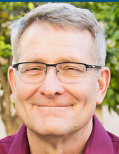 Wayne
Radochonski, CTO, Pixilica. Wayne
Radochonski, CTO, Pixilica.
Panelist.
Bio: Early in his career, Mr.
Radochonski did stints at Amdahl and Tandem Computers as a design engineer,
primarily in Japan. Later, Wayne went on to be one of the first employees at
MassPar and Caw Networks. Wayne worked at the Monterey Bay Aquarium Research
Institute (MBARI) for almost 20 years developing robotics and
instrumentation for long duration, autonomous scientific research in the
ocean. Since "retiring" from MBARI, Wayne has focused on creating products
for students and makers using FPGAs and the RISC-V architecture.
|
|
|
|
Andes Technology USA Corp
 |
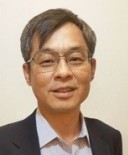 Dr.
Emerson Hsiao, Senior VP, Andes Technology USA Corp. Dr.
Emerson Hsiao, Senior VP, Andes Technology USA Corp.
Panelist.
Bio: Dr. Hsiao has an
extensive background in the ASIC and IP industry. Prior to joining Andes, he
worked at Kilopass Technology as the VP of Marketing. Dr. Hsiao previously
held the General Manager position for Faraday Technology USA, where he spent
several years in field application in various locations including Taiwan,
Japan and USA. Dr. Hsiao worked at UC Santa Barbara as a visiting scholar
prior to Faraday. Dr. Hsiao received his Ph.D degree in Electrical
Engineering from National Taiwan University.
|
|
|
|
Afternoon Break |
Afternoon Break |
|
|
|
GOWIN Semiconductor

|
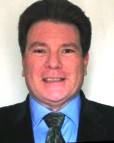 David
Grugett, Senior FAE Manager, Americas, GOWIN Semiconductor. David
Grugett, Senior FAE Manager, Americas, GOWIN Semiconductor.
“IoT Device and Data
Security for uSoC FPGAs at the Edge.”
Abstract: The extreme growth
of IoT devices places new demand on microcontrollers and SoC feature
requirements. IoT focused FPGAs have traditionally provided ways to fill
processor portfolio gaps, but have historically lacked integration of the
microprocessor and security engines to enable it as standalone edge
solution. PUF (Physically Unclonable Function) technology enables devices to
have a unique identity based on the intrinsic properties of a semiconductor
device. Integrating this with a driver library for the Arm Cortex-M
processor provides a root of trust for key generation, enabling device
security and data encryption. Combined with factory provisioning, each
device can be uniquely authenticated with a signed certificate from the
manufacturer. The associated private key is generated at power up based on
the PUF. This private key is never stored in flash and never leaves the
device. Programmable fabric of an FPGA allows for interfacing, always on
processing, and acceleration while a PUF based root of trust provides
unclonable security to validate device firmware and encrypt data. Arm
Cortex-M processors provide the ability to access PUF based encryption
engines and FPGA fabric for communicating and processing data securely at
the edge. These features combined provide IoT product developers
unprecedented reductions in cost, power and product form factor going
forward.
Bio: David Grugett is the Senior FAE Manager, Americas, for GOWIN
Semiconductor focused on implementation of solutions for programmable
technologies. He has over a decade of FPGA systems architecture and
implementation experience in areas including ASIC prototyping, interfacing,
bridging and edge connectivity. Mr. Grugett received his Bachelor of Science
in Electrical Engineering from DeVry University.
|
|
|
|
TSMC

|
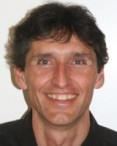
Dr. Paul Rousseau, Director
of TSMC North America’s Field Technical Solutions.
RISC-V; is this the Linux of CPU’s?"
"TSMC’s great adventure
into 7nm and beyond.”
Abstract: Moore’s law is
getting ever more difficult, yet we keep upping the ante. This talk will
describe how TSMC is leading into new territories with 7nm and beyond. Every
generation now requires disruptive innovations to keep scaling and providing
denser, faster and lower power technologies.
Bio: Paul Rousseau is Director for TSMC North America’s Field Technical
Solutions where his team supports TSMC’s earliest technology adopters from
technology definition to production. He has also held roles in enabling
emerging customers, together with the VC community, bring disruptive
technologies to the marketplace. Prior to TSMC, Paul worked as a process
integration engineer in both CMOS and Bipolar technologies. He earned his
Ph.D. and his Masters of Science Degree from Stanford University in Applied
Physics.
|
|
|
|
Google
Keynote

|
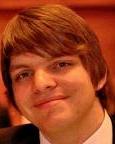 Dr.
Martin Maas, Research Scientist, Google Research, Brain Team. Dr.
Martin Maas, Research Scientist, Google Research, Brain Team.
“TBA"
Abstract: TBA
Bio: Research Scientist in the
Google Brain team. Before joining Google, I completed my PhD in the
Electrical Engineering and Computer Sciences department at UC Berkeley,
working with Krste Asanović and John Kubiatowicz. My primary research
interests are in managed language runtime systems, operating systems and
computer architecture. I am interested in the entire stack from the hardware
to the programming systems layer. At Google Brain, I am working on topics
related to machine learning. My PhD research focused on warehouse-scale
computers. I worked and collaborated across areas and built real systems
that involve large system-level codebases as well as hardware-level RTL. I
have applied this approach to domains ranging from security to managed
languages. During my PhD, I built a secure processor that provides
memory-trace obliviousness (a new security property) and can be targeted by
a custom compiler, a distributed language runtime system that coordinates
JVMs on different nodes in a cluster, and worked on hardware support for
garbage collection. I have also built research infrastructure, including
FPGA implementations of hardware based on the RISC-V ISA. Before
coming to UC Berkeley, I completed my undergraduate degree at the University
of Cambridge. In my undergraduate research, I investigated the challenges
and bottlenecks of implementing a Java Virtual Machine for the Barrelfish
Operating System. I was supervised by Ross McIlroy and Tim Harris from
Microsoft Research, Cambridge. During my time in high-school, I
was an active participant in science and programming competitions. I was on
the German team for the International Olympiad of Informatics (IOI) and
represented Germany at the International Science and Engineering Fair (ISEF).
|
|
|
|
ARM

|
 Dr.
Rob Aitken, R&D Fellow and technology lead for Arm Research, ARM. Dr.
Rob Aitken, R&D Fellow and technology lead for Arm Research, ARM.
“How to Feed Your Accelerators
– Requirements for Next Generation Memory Systems.”
Abstract: TBA
Bio: Rob
Aitken is an Arm Fellow and technology lead for Arm Research. He is
responsible for technology direction of Arm research, including identifying
disruptive technologies, monitoring the global technology landscape, and
coordinating research efforts within and outside of Arm. His role includes
developing strategic relationships with universities, consortia, and other
key participants in the global research community. His research interests
include emerging technologies, memory design, design for variability,
resilient computing, and statistical design. He has published over 80
technical papers on a wide range of topics including impacts of technology
scaling, statistics of memory bit cell variability and the use of static
current monitoring as a circuit testing and diagnostic mechanism. He holds
over 30 US patents. Dr. Aitken joined Arm as part of its acquisition of
Artisan Components in 2004. Prior to Artisan, he worked at Agilent and HP.
He has given keynote addresses, tutorials and short courses at conferences
and universities worldwide. He holds a Ph.D. from McGill University in
Canada. Dr. Aitken is an IEEE Fellow, and served as General Chair for the
2019 Design Automation Conference. |
|
|
|
SEGGER Microcontroller
LLC.
 |
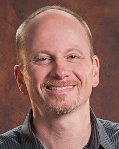 Axel
Wolf, Sr. Staff Field Applications Engineer, SEGGER Microcontroller LLC. Axel
Wolf, Sr. Staff Field Applications Engineer, SEGGER Microcontroller LLC.
"Visualizing and Recording
the true Runtime Behavior of a RISC-V based Application – in real-time."
Abstract: What if you could
take debugging your RISC-V based embedded system far beyond the system
insights provided by a regular debugger? What if you could ensure your
system performs as designed, track down inefficiencies, and show unintended
interactions and resource conflicts? And what if you could do all this in
real-time, and for free? This 25-minute presentation shows attendees
how they can achieve all this, using SystemView. SystemView is a free
real-time recording and visualization tool for embedded systems that reveals
the true runtime behavior of an application. Until recently, SystemView had
only been available for Arm-based systems. However, now that SEGGER added
RISC-V System Bus Access support, which in turn enabled the use of SEGGER’s
unique Real-Time Transfer (RTT) technology, SystemView has now finally also
become available to RISC-V users. RTT enables high-speed data transfer for
continuous extraction of real-time data, requiring no hardware other than a
J-Link and the standard RISC-V debug interface. SystemView offers cycle
accurate tracing of interrupts and task start-stop as well as task
activation and API calls when an RTOS is used. It visualizes and analyzes
CPU load by task and interrupts and scheduler. Using a J-Link debug probe
with SystemView provides the ultimate advantage of streaming data transfer:
Recording and analysis in real-time, working as a live software
oscilloscope. This is a great means to gain a deep understanding of the
runtime behavior of an application. SystemView records the data
retrieved from the target and visualizes the result in different ways. Data
recordings can also be saved for later documentation and analysis.
Evaluating a system this way is extremely helpful in finding and eliminating
problems or simply optimizing the system. It is an essential part of quality
management in any professional software development.
Bio: Axel Wolf is a Sr. Staff Field Applications Engineer at SEGGER
Microcontroller LLC, where he supports SEGGER’s customers and partners on
the US West Coast, providing technical support, on-site visits, and product
training. Axel also regularly represents SEGGER at trade shows, conferences,
and partner events. Axel is a well-known expert in the embedded
industry with 25 years of experience in microcontrollers and the associated
development tools. Before joining SEGGER in January of 2018, he served in
advanced technical, marketing, and management positions for top silicon
vendors such as Renesas Electronics, NXP Semiconductors, Philips
Semiconductors, and Infineon Technologies.
|
|
|
|
Panel







|
Panel:
“How AI and Machine Learning will Drive the Semiconductors Market to the
Next Level."
Moderator: Farhad Mafie, SoC Conference Chairman.
Panelists:
1. Dr. Jun Miyazaki, CEO and Founder OrangeTechLab Inc.
2. Dr. Tirthajyoti Sarkar, Sr. Principal Engineer, AI/Machine Learning, ON
Semiconductor.
3. Iman Khabazian, CTO, Vairtis Corporation.
4. Anil Mankar, COO & SVP Engineering, BrainChip Inc.
5. Alvin Joseph, CIO, VP Information Technology, Orora.
6. Dr. David Garrett, VP Hardware, Syntiant.
This
Panel Is Open To Everyone . . .
Register Online for FREE Panel Pass
|
|
|
|
Savant
Company Inc.

SoC Conference
|
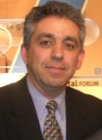 Farhad
Mafie, SoC Conference Chairman. Farhad
Mafie, SoC Conference Chairman.
Moderator
Farhad Mafie, President and
CEO of Savant Company Inc., has over 25 years of experience in high-tech
industries including semiconductor and computer businesses; additionally, he
has more than 15 years of university-level teaching experience. A seasoned
technical executive with extensive global experience in marketing, sales,
and engineering. He enjoys developing business plan and go-to-market
strategies for innovative and disruptive technologies, deal making,
developing strategic alliances and partnerships.
In 2017, he became the CEO of Handycash Inc., a newly formed startup in
Switzerland, developing an innovative mobile payment system based on
Blockchain technology that will be launched in 2020.
For almost six years at
Microsemi Corporation, as Vice President of Worldwide Product Marketing and
Corporate Communications teams (in US, EU, India, and China), Farhad
developed and managed the entire Microsemi’s worldwide outbound and inbound
marketing strategies and programs; and worked directly with executive team
on M&A projects and successfully integrating over 22 acquired companies.
Farhad is also the former Vice
President of Marketing/Business Development and Technical Sales Engineering
at Toshiba America Electronic Components, Inc. He was responsible for
marketing the entire Toshiba standard ICs products in North America, as well
as engineering development for Toshiba's Embedded and Digital Consumer
products based on ASSP and SoC models.
Farhad has worked at Lucent
Technologies on marketing communications ICs, Toshiba Information Systems on
product definition for Toshiba's notebooks PCs and handheld products, Unisys
on designing new processors and computer systems, Ocean Scientific on
designing medical instrumentations, and MSI Data on designing data
collection products. He has a Master of Science and a Bachelor of Science
degree in Electronic Engineering from California State University,
Fullerton.
In 2003, Farhad designed,
developed, and launched the annual Internationals System-on-Chip (SoC)
Conference, Exhibits, and Workshops
http://www.socconference.com. For two exciting days, this annual
international Conference brings the most innovative and groundbreaking
Chip-related technologies to its targeted audience. As the SoC Conference
Chairman, he has driven the Conference leading-edge program at UC Irvine for
the past 16 years.
In 2019, Blockchain Technology
Summit was launched to bring the latest blockchain-related technologies,
applications and startups in an exciting and educational Summit for
worldwide audience http://www.blockchaintechnologysummit.com.
Farhad is an author and a
translator. In 2003, he published the biography of Iranian poet and Nobel
nominee who lived in exile, Nader Naderpour (1929-2000), Iranian Poet,
Thinker, Patriot. Farhad is also Editor-in-Chief for the CRC Press SoC
Design and Technologies Book Series, which includes (1) Low-Power NoC for
High-Performance SoC Design and (2) Design of Cost-Efficient Interconnect
Processing Units.
Farhad is a member of two UCI
Advisory Committees: Communication System Engineering and Embedded System
Engineering Certificate Programs. He is also the chair of IEEE Orange County
Solid-State Circuits Society (SSCS), as well as IEEE Orange County
Entrepreneurs' Network (OCEN).
|
|
|
|
Syntiant
 |
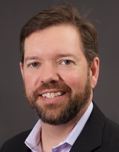 Dr.
David Garrett, VP Hardware, Syntiant. Dr.
David Garrett, VP Hardware, Syntiant.
Panelist.
Bio: Dave Garrett, Ph.D. is
vice president of hardware at Syntiant Corp. He is a technical expert in
semiconductor design, focusing on digital signal processing, VLSI
architecture, and chip design flows. Prior to Syntiant, he held the role of
associate technical director at the Broadcom office of the CTO and is
recognized as a Distinguished Engineer within the company. He was
responsible for the transmit beamforming (TxBF) architectures in both the
client and router side of Broadcom's 802.11ac/ax chipsets, shipping in more
than a billion devices. He is an IEEE Fellow, holds 95 granted US patents,
and is the previous General Chair of the International Symposium on Low
Power Electronics and Design (ISLPED). Previously, Dr. Garrett was at
Bell Labs Wireless Research Division and later served as Director of
Engineering, R&D Systems, at Beceem Communications, which was later acquired
by Broadcom. Dr. Garrett received his Ph.D. from the University of Virginia,
Charlottesville.TBA.
|
|
|
|
OrangeTechLab Inc
 |
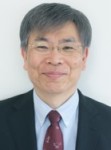 Dr.
Jun Miyazaki, CEO and Founder OrangeTechLab Inc. Dr.
Jun Miyazaki, CEO and Founder OrangeTechLab Inc.
Panelist.
Bio: TBA.
|
|
|
|
ON Semiconductor
 |
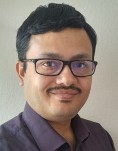 Dr.
Tirthajyoti Sarkar, Sr. Principal Engineer, AI/Machine Learning, ON
Semiconductor. Dr.
Tirthajyoti Sarkar, Sr. Principal Engineer, AI/Machine Learning, ON
Semiconductor.
Panelist.
Bio: Dr. Tirthajyoti
Sarkar has been involved in power semiconductor technology development and
product innovation for the past 15 years. Currently, he works as Sr.
Principal Designer at ON Semiconductor, where he also leads multiple
projects focusing on applying AI/ML techniques for product or process
innovation, and design automation. He has authored 30+ internal publications
and multiple U.S. patents in semiconductor and power electronics domain.
Tirthajyoti is a Senior Member of IEEE, and serves as a Chair of
Semiconductor committee for Power Sources Manufacturers’ Association, a
global consortium of industries in power electronics. He also serves as an
associate editor of Towards Data Science, the most wide-reaching online
publication platform in data science and machine learning. Tirthajyoti
regularly conducts tutorials and workshops on hands-on machine learning and
data analytics along with IEEE and ACM societies in the Bay area. His book
on “Data wrangling with Python” was well received in the community and he is
working on a second book “Hands-on Mathematics for Data Scientists”. He has
also published multiple open-source software packages in the domain of data
science and statistical modeling. Tirthajyoti holds a Ph.D. in EE from the
Univ. of Illinois and is currently working toward a M.S. in Computational
Data Analytics from Georgia Tech. He is committed to lifelong learning.
|
|
|
|
Vairtis Corporation
|
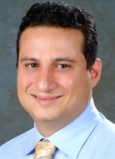 Iman
Khabazian, CTO, Vairtis Corporation. Iman
Khabazian, CTO, Vairtis Corporation.
Panelist.
Bio: Iman is a seasoned
CTO specializing in AI. As CTO of Vairtis, he built technology that can
detect pathologies from reading CT Scans. Iman founded Hitsfu, which using
machine learning to predict the monetary value of app users. Previous to
working in AI he was Technical Director at Disney where he built games that
drove over $80M in revenue and also worked at Playdom, a start-up which was
acquired by Disney for $530m.
|
|
|
|
BrainChip
 |
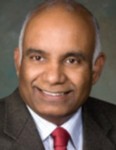 Anil
Mankar, COO & SVP Engineering, BrainChip Inc. Anil
Mankar, COO & SVP Engineering, BrainChip Inc.
Panelist.
Bio: Anil Mankar has spent 30
years developing products in the semiconductor industry. At Western Digital,
Mr. Mankar developed PC core Logic chipsets. During his years at Conexant
Systems Inc. in the position of VP of Engineering, he developed multiple
products across industry segments and later became the company’s Chief
Development Officer overseeing all product development for V92 Modem, DSL,
Set-top boxes, PC audio and video ‘System on a Chip’ products. Mr. Mankar
was SVP of VLSI Engineering at Mindspeed Technologies, responsible for
Wireless and VOIP infrastructure product development.
|
|
|
|
Orora

|
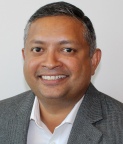 Alvin
Joseph, CIO, VP Information Technology, Orora. Alvin
Joseph, CIO, VP Information Technology, Orora.
Panelist.
Bio: Alvin is the CIO &
VP of information technology at Orora Packaging Solutions (www.ororapackagingsolutions.com)
. He has about 25 years of professional experience with companies from a
variety of industries, most recently as Director, Corporate Business Systems
at TowerJazz Semiconductor where he built from ground up a best in class IT
business systems infrastructure and team. He was also the IT champion for
the “go global” business transformation program to unify business processes,
improve operational efficiencies, enhance customer experience and enable new
business models. Prior to that he held positions of increasingly higher
responsibilities within IT at TowerJazz Semiconductor, Jazz Semiconductor
and Conexant Systems. He also has many years of IT consulting experience
providing SAP solutions. He holds a Bachelor’s degree in Electrical and
Electronics Engineering from the University of Kerala, India and a Master’s
degree in Business Administration from the University of Phoenix.
Alvin enjoys playing tennis. With 3 boy scouts at home, he spends a good
amount of time hiking and camping. He also loves to volunteer and give back
to the community. He has served on the boards of Orange County chapter of
the Project Management Institute and the Orange County Section of the IEEE.
Along with his wife and 3 sons, he currently volunteers at the Thomas House
family Shelter at Garden Grove.
|
|
|
|
Tabletop Exhibition
Student Design Contest & Reception
Open to Public |
Tabletop Exhibition
Student Design Contest & Reception
Open to Public
|
|
|
|
|
Day TWO Thursday, October 17, 2019
SoC Conference Program Agenda* |
|
|
|
Savant
Company Inc.

SoC Conference
 |
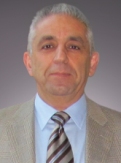 Farhad
Mafie, SoC Conference Chairman. Farhad
Mafie, SoC Conference Chairman.
Moderator
Farhad Mafie, President and
CEO of Savant Company Inc., has over 25 years of experience in high-tech
industries including semiconductor and computer businesses; additionally, he
has more than 15 years of university-level teaching experience. A seasoned
technical executive with extensive global experience in marketing, sales,
and engineering. He enjoys developing business plan and go-to-market
strategies for innovative and disruptive technologies, deal making,
developing strategic alliances and partnerships.
In 2017, he became the CEO of Handycash Inc., a newly formed startup in
Switzerland, developing an innovative mobile payment system based on
Blockchain technology that will be launched in 2020.
For almost six years at
Microsemi Corporation, as Vice President of Worldwide Product Marketing and
Corporate Communications teams (in US, EU, India, and China), Farhad
developed and managed the entire Microsemi’s worldwide outbound and inbound
marketing strategies and programs; and worked directly with executive team
on M&A projects and successfully integrating over 22 acquired companies.
Farhad is also the former Vice
President of Marketing/Business Development and Technical Sales Engineering
at Toshiba America Electronic Components, Inc. He was responsible for
marketing the entire Toshiba standard ICs products in North America, as well
as engineering development for Toshiba's Embedded and Digital Consumer
products based on ASSP and SoC models.
Farhad has worked at Lucent
Technologies on marketing communications ICs, Toshiba Information Systems on
product definition for Toshiba's notebooks PCs and handheld products, Unisys
on designing new processors and computer systems, Ocean Scientific on
designing medical instrumentations, and MSI Data on designing data
collection products. He has a Master of Science and a Bachelor of Science
degree in Electronic Engineering from California State University,
Fullerton.
In 2003, Farhad designed,
developed, and launched the annual Internationals System-on-Chip (SoC)
Conference, Exhibits, and Workshops
http://www.socconference.com. For two exciting days, this annual
international Conference brings the most innovative and groundbreaking
Chip-related technologies to its targeted audience. As the SoC Conference
Chairman, he has driven the Conference leading-edge program at UC Irvine for
the past 16 years.
In 2019, Blockchain Technology
Summit was launched to bring the latest blockchain-related technologies,
applications and startups in an exciting and educational Summit for
worldwide audience http://www.blockchaintechnologysummit.com.
Farhad is an author and a
translator. In 2003, he published the biography of Iranian poet and Nobel
nominee who lived in exile, Nader Naderpour (1929-2000), Iranian Poet,
Thinker, Patriot. Farhad is also Editor-in-Chief for the CRC Press SoC
Design and Technologies Book Series, which includes (1) Low-Power NoC for
High-Performance SoC Design and (2) Design of Cost-Efficient Interconnect
Processing Units.
Farhad is a member of two UCI
Advisory Committees: Communication System Engineering and Embedded System
Engineering Certificate Programs. He is also the chair of IEEE Orange County
Solid-State Circuits Society (SSCS), as well as IEEE Orange County
Entrepreneurs' Network (OCEN).
|
|
|
|
Lunch
|
Lunch |
|
|
|
Nantero,
Inc.
 |
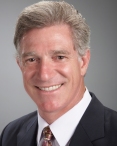 Bill
Gervasi, Principal Systems Architect, Nantero, Inc. Bill
Gervasi, Principal Systems Architect, Nantero, Inc.
“Nantero NRAM Redefines
Memory.”
Abstract: A Holy Grail of
memory technologies would be a memory cell with the performance of a DRAM
but with persistence and unlimited write endurance. Nantero NRAM is such a
technology and more, employing electrostatically switched carbon nanotubes
to construct a persistent memory cell array with a wide operating
temperature range, low power, low cost due to simple manufacturing
processes, and perhaps best of all, NRAM is licensable for incorporation
into any design. The focus of this talk is on applications, however,
exploring how assembling persistent memory into crosspoints for mass storage
or transistor-per-element arrays for local storage changes how system
designers can approach a wide variety of applications ranging from AI and
deep learning to storage subsystems to non-von Neumann architectures.
Bio: Mr. Gervasi has over 40 years of experience in high speed memory
subsystem definition, design, and product development. Career highlights
include 19 years at Intel where he was systems hardware designer, software
designer, and strategic accounts manager. Mr. Gervasi subsequently was with
S3 where he was a graphics architecture specialist and at Transmeta as
memory technology analyst. Most recently he held several key positions with
companies such as Netlist, SimpleTech, and US Modular driving unique memory
module configurations. He is now Principal Systems Architect for Nantero,
developing non-volatile RAM-class memories. Mr. Gervasi been involved in the
definition of Double Data Rate SDRAM since its earliest inception. He has
served on the JEDEC Board of Directors and chaired committees for DRAM
parametrics and small form factor memory modules during the development of
DDR1 through DDR5. He is currently the chairman of the JEDEC Non-Volatile
Memory committee.
|
|
|
|
Mellanox
Technologies Inc.

|
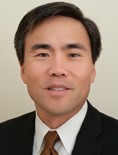 John
F. Kim, Director of Storage Marketing, Mellanox Technologies. John
F. Kim, Director of Storage Marketing, Mellanox Technologies.
“SmartNIC SoC: What is it
and why would I need one?”
Abstract: Something
interesting is going on lately in the networking industry where we start to
see SoC components moving from the server towards the network. Instead of
using regular NIC, companies start moving to use SmartNIC where a main SoC
is installed on the network card. The SmartNIC introduce a new aspect of
having compute resource with dedicated hardware-based offloads at the
network edge enables to run more tasks in higher performance and free up the
main host CPU. At the same time, SmartNIC can take over security related
tasks like, encryption and decryption as well as security rules deployment
in the data center. In this section, we would show the advantage of SmartNIC
and its capabilities to enable better business model of customers.
Bio: John F. Kim is Director of Storage Marketing at Mellanox Technologies,
where he helps storage customers and vendors benefit from high performance
network connections, SmartNIC offloads, and Remote Direct Memory Access (RDMA).
A frequent blogger, conference speaker, and webcast presenter, John is also
chair of the Storage Networking Industry Association (SNIA) Networking
Storage Forum (NSF). After starting his high tech career at an IT helpdesk
and as a network administrator, John worked in solution marketing, product
management, and alliances, first for enterprise software companies and then
for many years in enterprise storage at NetApp and EMC.
|
|
|
|
University of Michigan

|
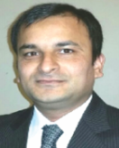 Dr.
Afzaal Qamar, Postdoctoral Research Fellow, EECS, University of Michigan. Dr.
Afzaal Qamar, Postdoctoral Research Fellow, EECS, University of Michigan.
“III-V on Silicon
Electro-acoustic Devices and Systems.”
Abstract: The talk will focus
on the development of unprecedented, robust, and highly sensitive
piezoelectric resonators with high quality factors (Qs) and improved
electromechanically coupling coefficient using AlN, GaN, and SiC wide band
gap semiconductors. Among different piezoelectric materials, AlN is much
suitable choice for many RF applications due to its fabrication simplicity
and reproducibility as well as its high thermal conductivity and
compatibility with CMOS fabrication. The main objective is to investigate
all the possible loss mechanisms in thin film piezoelectric resonators and
ultimately rectify the losses to produce ultra-high Q resonators for
applications in radio frequency (RF) filters, integrated high-frequency
oscillators, and low power resonant sensors. The losses are investigated by
analytical modeling, COMSOL and experimentally with different
heterostructures stacks of Al/AlN/Si and Al/AlN/SiC etc. Another wide
bandgap material Gallium nitride (GaN), which is less explored for
piezoelectric MEMS devices, will also be dicussed. GaN has a high acoustic
velocity (comparable to silicon) and large piezoelectric coefficients
(comparable to that of aluminum nitride (AlN)). But, what is unique about
GaN is that it is both a semiconductor and a piezoelectric material, unlike
silicon and AlN. The action of piezoelectricity within a semiconductor
allows for a family of versatile and sensitive transducers in GaN, amongst
which, this research focuses on developing GaN resonators and RB-HEMTs.
Along with new device development, this research aims at understanding the
phenomena resulting from the simultaneous presence of piezoelectricity and
conductivity in the same crystal. The acoustic wave propagating in such a
crystal will be accompanied by a piezoelectric electric field, which in
turn, acts on the mobile charge carriers (e.g., electrons). The effect of
such interactions between electrons and phonons can be undesirable or very
interesting, depending on the conductivity, and the crystalline properties
of the material, as well as the acoustic wave frequency. To fully unlock the
potential of GaN and realize an all-GaN MMIC, it is essential to
co-integrate passive devices (such as resonators and filters), sensors (such
as temperature and gas sensors), and other more-than-Moore functional
devices with GaN ICs. This study will provide a platform for all-GaN MMIC
devices and systems. Silicon Carbide (SiC) on the other hand is a
piezoresistive material, which can be used for pressure/force/strain sensing
in harsh environment. The uses of SiC not only focus on development of
pressure/force sensing using the piezoresistive effect but we are also
working on combining AlN with SiC to produce low loss AlN/SiC based
piezoelectric resonators. SiC has low acoustic losses and when combined with
AlN, it can produce high Q piezoelectric resonators. Another direction of
this research is to combine piezoelectric sensing/actuation with
piezoresistive actuation/sensing for study the energy losses in MEMS
resonators and analyze which of them can produce high quality factors.
Bio: Dr. Afzaal Qamar is currently a post-doctoral research fellow with the
Department of Electrical Engineering and Computer Science (EECS), University
of Michigan, Ann Arbor, USA. His research interests are MEMS/NEMS devices,
piezoelectric and piezoresistive properties of wide bandgap (AlN, GaN, and
SiC) semiconductors, and other acoustic MEMS devices for timing, RF, and
sensing applications. Dr. Afzaal has a PhD degree from Queensland Micro and
Nanotechnolgy Centre, Griffith University, Australia on an international
competitive scholarship. He received best oral presentation award at the
ICNNE-2016, Paris, for presenting his research paper. He has extensive
experience of thin film growth/characterization and micro/nano device
fabrication for piezoresistive and piezoelectric sensing. He has been
co-author of over 40 peer-reviewed journal articles and conference papers in
his field of research with h-index of 18, i10-index of 22 and total citation
index of 627.
|
|
|
|
UCSD
 |
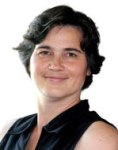 Tajana
Simunic Rosing, Full Professor & Fratamico Endowed Chair, Dept of CSE and
ECE, IEEE Fellow, Director of System Energy Efficiency Lab at UCSD. Tajana
Simunic Rosing, Full Professor & Fratamico Endowed Chair, Dept of CSE and
ECE, IEEE Fellow, Director of System Energy Efficiency Lab at UCSD.
“Hyperdimensional Computing
and Applications"
Abstract: TBA
Bio: Tajana Simunic Rosing is
a Professor, a holder of the Fratamico Endowed Chair, IEEE Fellow, and a
director of System Energy Efficiency Lab at UCSD. Her research interests are
in energy efficient computing, cyber-physical and distributed systems. She
is leading a number of projects, including efforts funded by DARPA/SRC JUMP
CRISP program, with focus on design of accelerators for analysis of big
data, a project focused on developing AI systems in support of healthy
living, SRC funded project on IoT system reliability and maintainability,
and NSF funded project on design and calibration of air-quality sensors and
others. She recently headed the effort on SmartCities that was a part of
DARPA and industry funded TerraSwarm center. Tajana led the energy efficient
datacenters theme in MuSyC center, and a number of large projects funded by
both industry and government focused on power and thermal management.
Tajana’s work on proactive thermal management and ambient-driven thermal
modeling was instrumental in laying the groundwork in this field, and has
since resulted in a number of industrial implementations of these ideas. Her
research on event driven dynamic power management laid the mathematical
foundations for the engineering problem, devised a globally optimal solution
and more importantly defined the framework for future researchers to
approach these kinds of problems in embedded system design. From 1998 until
2005 she was a full time research scientist at HP Labs while also leading
research efforts at Stanford University. She finished her PhD in EE in 2001
at Stanford, concurrently with finishing her Masters in Engineering
Management. Her PhD topic was dynamic management of power consumption. Prior
to pursuing the PhD, she worked as a senior design engineer at Altera
Corporation. She has served at a number of Technical Paper Committees,
including being an Associate Editor of IEEE Transactions on Mobile
Computing, an Associate Editor of IEEE Transactions on Circuits and Systems,
and a Guest Editor for the Special Issue of IEEE Transactions on VLSI.
|
|
|
|
IBM
Keynote

|
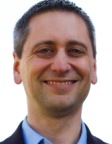 Jason
S. Miller, Director, IBM Z Processor and Systems Chips Development. Jason
S. Miller, Director, IBM Z Processor and Systems Chips Development.
"The Technology Behind the
Latest IBM Z Mainframe"
Abstract: Mainframes are the
IT foundation of the global economy. Every day, over $25B of credit card and
ATM transactions flow through the platform, as well as millions of airline
reservations, hotel bookings, car rentals, etc. In this talk, we will look
at the custom silicon technology that powers this essential platform,
including the ultra high-frequency central processor, the custom I/O data
routers, and the industry-leading hardware encryption engines. Included in
this talk will be a discussion of the pre-silicon verification methodologies
that enable us to bring highly complex processors and SOCs to market in
record time.
Bio: Jason Miller is the Director of IBM Z Processor and Systems Chips
Design at IBM. He leads a global team responsible for designing and bringing
to market the industry-leading high performance processors and SOCs that
power IBM Mainframes. Prior to this role, Jason led Procurement Engineering
for IBM, supporting all procured hardware components and technologies for
IBM Systems. Over his career, Jason has held numerous roles in Systems
Hardware Development, ASIC Design, Semiconductor Manufacturing, and
Microelectronic Packaging. Jason joined IBM in 2000. He holds a BS in
Mechanical Engineering from Penn State University.
|
|
|
|
Lunch |
Lunch |
|
|
|
AONDevices
 |
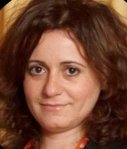 Mouna
Elkhatib, CEO, AONDevices. Mouna
Elkhatib, CEO, AONDevices.
“Ultra-Low Power &
Always-on AI Voice and Audio recognition: Challenges and opportunities.”
Abstract: The proliferation of
‘always-listening’ voice control technology in battery powered applications
is currently limited by the fact that there is no solution available that is
at the same time accurate enough to be reliable in a noisy environment, low
enough power for always-on battery powered operation and low cost.
Artificial intelligence and in particular deep learning are giving promising
results in this space but multiple challenges need to be overcome to create
winning solutions. The technology needs to support at the minimum Wake-word
detection and voice command recognition, and it has to be ultra-Low power
for always-listening voice-enabled applications. It has to offer high
accuracy in the presence of background noise and reverb. It also has to be
tolerant to variabilities within user, between users and environments.
Finally, it should be scalable to detect multiple commands concurrently.
Innovation in this space has to include data augmentation, advanced Neural
Networks and low power HW implementation.
Bio: Mouna Elkhatib, CEO, AONDevices. Mouna has over 18 years of experience
in the semiconductor business with a strong track record as an excellent
engineer, cross-functional team leader and technical marketing expert. Prior
to AONdevIces, she was the system lead and principal chip architect at
Qualcomm for a family of audio codec chips with integrated voice activation.
Before that, she held the director of VLSI position at Conexant, managing
audio SOC architecture and design. She is one of the key developers of
Conexant's PC-HD audio codecs, USB audio codecs/DSP and Voice input
processor SOCs for smart speakers. Mouna holds an engineering degree from
Ecole Nationale Supérieure d'Electricité et de Mécanique (ENSEM), 11 US
patents and multiple awards.
|
|
|
|
Xilinx
Keynote

|
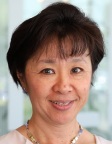 Jennifer
Wong, Vice President of FPGA Product Development. Xilinx Inc. Jennifer
Wong, Vice President of FPGA Product Development. Xilinx Inc.
"A Holistic Approach for
System Integration and Performance Optimization."
Abstract: Rapid scaling with
Moore’s Law and the more recent 3DIC development have led to the shrinking
of electronic systems over the last several decades. As scaling continues
beyond single CMOS device to include heterogeneous devices in 2.5D and 3D
stacking, design methodologies need to keep pace to enable complex
integration to achieve optimal system performance. This requires a new
holistic approach for design optimization of the integrated silicon, package
and PCB leading to miniaturized solutions that have superior performance.
Bio: Jennifer Wong is Corporate Vice President of Silicon Integration at
Xilinx, where she is responsible for design methodology and chip-level
integration, as well as system signal/power integrity, package and
printed-circuit board development. She has contributed to over 8 generations
of FPGAs and SoCs at Xilinx. Before joining Xilinx, Jennifer was with
Advanced Micro Devices developing CPLDs. She received her Master of Science
and Bachelor of Science degrees, both in electrical engineering, from the
University of California, Berkeley. In addition, Jennifer has published
multiple papers and has earned 45 patents.
|
|
|
|
University of
Pennsylvania
 |
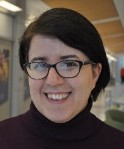 Nasim
Mohammadi Estakhri, Ph.D., Postdoctoral Researcher, University of
Pennsylvania. Nasim
Mohammadi Estakhri, Ph.D., Postdoctoral Researcher, University of
Pennsylvania.
“Inversed-designed
Metastructures to Solve Linear Equations."
Abstract: Integrated photonic
structures hold the potential to impact several applications in
communications, sensing, interconnects, etc. Here, we explore an integrated
platform designed to perform simple mathematical calculations using
electromagnetic waves. Previous works have pointed out the possibility of
designing metamaterials to perform as mathematical “operators” for the wave
traversing the structure (such as differentiator, integrator, etc.). In such
case the entire spatial profile of the wave undergoes the desired
transformation at the speed of the propagation of the electromagnetic waves
(therefore processed in a parallel manner and with a potentially very high
speed). These characteristics are of interest to create analog optical
computing elements. In this presentation, we discuss the possibility of
using inverse-designed photonic and microwave structures to perform more
complicated operations, namely to solve systems of linear equations. We
exploit topology-optimization to create the kernel of the structure which
physically implements the system of equations. A feedback mechanism is then
introduced to the structure to close the signal loop. We will discuss two
arrangements to create the feedback in reflection and transmission modes.
Upon excitation of the structure with an input wave, the solution of the
equation is created as complex values of the amplitudes of electromagnetic
field in the steady state. A set of directional couplers are used to apply
the input and extract the output signals. We will present simulation and
experimental results which are performed at microwave frequencies and
discuss practical aspects of the design in terms of sensitivity to
imperfections and noise.
Bio: Nasim Mohammadi Estakhri is a postdoctoral researcher at the department
of Electrical and Systems Engineering at University of Pennsylvania. Her
research broadly focuses on nanophotonic metamaterials and applied
electromagnetics, with recent emphasis on computational metamaterials and
novel flat optical components. She received the B.Sc. and M.Sc. (summa cum
laude) degrees from the University of Tehran, Iran, and the Ph.D. degree in
Electrical and Computer Engineering from The University of Texas at Austin,
Austin, TX, in 2016. Dr. Mohammadi Estakhri is a recipient of the George J.
Heuer Jr. PhD Endowed Graduate Fellowship from UT-Austin (2013),
Professional Development Award from UT-Austin (2013), the IEEE Photonics
Society Graduate Student Fellowship (2016), and DMP-APS Post-Doctoral Travel
Award (2018). She was recognized as a Rising Star in EECS by Stanford
University (2017), and MIT (2018), and was Caltech’s EAS Young Investigator
Lecturer in 2019.
Personal webpage: https://sites.google.com/site/nasimmohammadiestakhri/
|
|
|
|
Afternoon Break |
Afternoon Break |
|
|
|
Intrinsic ID

|
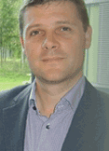 Dr.
Pim Tuyls, Founder and Chief Executive Officer, Intrinsic ID. Dr.
Pim Tuyls, Founder and Chief Executive Officer, Intrinsic ID.
“Eyes Wide Shut: Is Today's
Silicon Secure?”
Abstract: The Internet of
Things growth continues to accelerate and create opportunity. But, as many
who are responsible for their companies’ success and survival often seem
content to ignore, so does the security risk. Ensuring IoT security has not
kept pace with the rapidly evolving threat model. This should prompt many
questions for those whose business relies on a secure IoT. “Can we be sure a
device’s firmware hasn’t been altered by hackers?” “Is secure two-way
communications possible?” “Can we scale to trillions of devices in a way
that’s commercially viable?” And “Will the microcontroller I design into my
product today actually protect it during its whole lifecycle?” Securing
endpoints in a reliable and robust method to achieve trust in the IoT can
come at a significant cost. Strong device authentication is pivotal to
confidently scale in a profitable manner. In this talk, Intrinsic ID CEO Pim
Tuyls will describe how use of unclonable identities for IoT products is the
best way to establish strong security in an industrial setting, and do so in
an economically viable manner.
Bio: Pim Tuyls is CEO of Intrinsic ID, a company specializing in IoT
security technology. Before founding Intrinsic ID in 2008 he was at Philips
Research, where he was Principal Scientist and managed the cryptography
cluster. While there he initiated the work on Physical Unclonable Functions
(PUFs), which forms the basis of Intrinsic ID’s silicon fingerprinting
technology. Tuyls has a Ph.D. in mathematical physics from Leuven
University, holds more than 50 patents and is widely acknowledged for his
work in the field of security for embedded applications.
|
|
|
|
Syntiant
 |
 Dr.
David Garrett, VP Hardware, Syntiant. Dr.
David Garrett, VP Hardware, Syntiant.
"Always-on Artificial
Intelligence for Battery-Powered Devices."
Abstract: This talk will
dive into Syntiant's custom silicon for ML edge inference, with a look at
use cases, architecture, and what it takes to train production-quality ML
pipelines.
Bio: Dave Garrett, Ph.D. is
vice president of hardware at Syntiant Corp. He is a technical expert in
semiconductor design, focusing on digital signal processing, VLSI
architecture, and chip design flows. Prior to Syntiant, he held the role of
associate technical director at the Broadcom office of the CTO and is
recognized as a Distinguished Engineer within the company. He was
responsible for the transmit beamforming (TxBF) architectures in both the
client and router side of Broadcom's 802.11ac/ax chipsets, shipping in more
than a billion devices. He is an IEEE Fellow, holds 95 granted US patents,
and is the previous General Chair of the International Symposium on Low
Power Electronics and Design (ISLPED). Previously, Dr. Garrett was at
Bell Labs Wireless Research Division and later served as Director of
Engineering, R&D Systems, at Beceem Communications, which was later acquired
by Broadcom. Dr. Garrett received his Ph.D. from the University of Virginia,
Charlottesville.TBA.
|
|
|
|
Stanford
University
 |
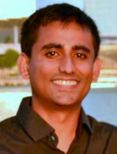 Yatish
Turakhia; PhD Candidate, Stanford University. Yatish
Turakhia; PhD Candidate, Stanford University.
“Hardware Acceleration of
Genomic Sequence Alignment and Its Applications.”
Abstract: The public release
of the Gen-Z Core Specification 1.0 allows silicon providers and IP
developers to start working on products based on this exciting new
interface. Gen-Z is the right way to address the worldwide explosion of data
(180ZB annually by 2025) and the need for a high throughput, low-latency,
scalable, memory-centric fabric. Gen-Z responds to the rapid rise in the
number of extremely fast devices and enables a memory-centric architecture
with full composability. It simplifies memory-to-memory transfers and
eliminates the need for side channels and DMA, thus avoiding
behind-the-curtain operations that are difficult to understand, evaluate,
debug, or update. Gen-Z is designed with security as a key tenet and
contains embedded access and security rights. Future versions of Gen-Z will
meet the needs of emerging applications such as artificial intelligence,
cognitive computing, real-time data analysis, the Edge, and autonomous
systems.
Bio: Yatish Turakhia is a fifth year PhD candidate at the Electrical
Engineering Department of Stanford University. He is co-advised by Professor
Bill Dally and Professor Gill Bejerano. His research focuses designing a
co-processor for accelerating a wide-range of algorithms involving genomic
sequence alignment – from read assembly to remote homology search. He is a
recipient of the NVIDIA Graduate Fellowship (2016). His work has received
the Best Paper Award at ASPLOS 2018 and appeared as one of IEEE Micro Top
Picks 2018.
|
|
|
|
Panel





"FREE"
|
Panel:
“Is Blockchain of Things IoT 2.0? Could Blockchain of Things be the Security
solution that the industry has been looking for?"
Moderator: Farhad Mafie, SoC Conference Chairman.
Panelists:
Panelists:
1. Dr. Pim Tuyls, Founder and Chief Executive Officer, Intrinsic ID.
2. Marc Canel, Vice President of Strategy – Security at Imagination
Technologies.
3. Jauher Zaidi, Chairman & Chief Innovation Officer, Palmchip Corporation.
4. Chad Blickenstaff, Enterprise Resource Manager, Oracle.
5. Pamela Norton, CEO and Founder, Borsetta.
6. TBA.
This
Panel Is Open To Everyone . . .
Register Online for FREE Panel Pass
|
|
|
|
Savant
Company Inc.

|
 Farhad
Mafie, SoC Conference Chairman. Farhad
Mafie, SoC Conference Chairman.
Moderator
Farhad Mafie, President and
CEO of Savant Company Inc., has over 25 years of experience in high-tech
industries including semiconductor and computer businesses; additionally, he
has more than 15 years of university-level teaching experience. A seasoned
technical executive with extensive global experience in marketing, sales,
and engineering. He enjoys developing business plan and go-to-market
strategies for innovative and disruptive technologies, deal making,
developing strategic alliances and partnerships.
In 2017, he became the CEO of Handycash Inc., a newly formed startup in
Switzerland, developing an innovative mobile payment system based on
Blockchain technology that will be launched in 2020.
For almost six years at
Microsemi Corporation, as Vice President of Worldwide Product Marketing and
Corporate Communications teams (in US, EU, India, and China), Farhad
developed and managed the entire Microsemi’s worldwide outbound and inbound
marketing strategies and programs; and worked directly with executive team
on M&A projects and successfully integrating over 22 acquired companies.
Farhad is also the former Vice
President of Marketing/Business Development and Technical Sales Engineering
at Toshiba America Electronic Components, Inc. He was responsible for
marketing the entire Toshiba standard ICs products in North America, as well
as engineering development for Toshiba's Embedded and Digital Consumer
products based on ASSP and SoC models.
Farhad has worked at Lucent
Technologies on marketing communications ICs, Toshiba Information Systems on
product definition for Toshiba's notebooks PCs and handheld products, Unisys
on designing new processors and computer systems, Ocean Scientific on
designing medical instrumentations, and MSI Data on designing data
collection products. He has a Master of Science and a Bachelor of Science
degree in Electronic Engineering from California State University,
Fullerton.
In 2003, Farhad designed,
developed, and launched the annual Internationals System-on-Chip (SoC)
Conference, Exhibits, and Workshops
http://www.socconference.com. For two exciting days, this annual
international Conference brings the most innovative and groundbreaking
Chip-related technologies to its targeted audience. As the SoC Conference
Chairman, he has driven the Conference leading-edge program at UC Irvine for
the past 16 years.
In 2019, Blockchain Technology
Summit was launched to bring the latest blockchain-related technologies,
applications and startups in an exciting and educational Summit for
worldwide audience http://www.blockchaintechnologysummit.com.
Farhad is an author and a
translator. In 2003, he published the biography of Iranian poet and Nobel
nominee who lived in exile, Nader Naderpour (1929-2000), Iranian Poet,
Thinker, Patriot. Farhad is also Editor-in-Chief for the CRC Press SoC
Design and Technologies Book Series, which includes (1) Low-Power NoC for
High-Performance SoC Design and (2) Design of Cost-Efficient Interconnect
Processing Units.
Farhad is a member of two UCI
Advisory Committees: Communication System Engineering and Embedded System
Engineering Certificate Programs. He is also the chair of IEEE Orange County
Solid-State Circuits Society (SSCS), as well as IEEE Orange County
Entrepreneurs' Network (OCEN).
|
|
|
|
Imagination
Technologies
 |
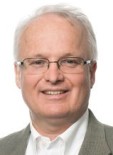 Marc
Canel, Vice President of Strategy – Security at Imagination Technologies. Marc
Canel, Vice President of Strategy – Security at Imagination Technologies.
Panelist.
Bio: Marc Canel is Vice
President of Strategy – Security at Imagination Technologies. He has
extensive experience in the IoT and mobile markets, having driven projects
focused on the integration of devices in enterprises. In his role, he is
paving the way for the next generation of security architectures to enable
applications in a connected world. He promotes the definition of standards
for identity, trust and the binding of devices to applications. Prior to
Imagination Technologies, he drove Arm’s security strategy for IoT security
systems. Prior to Arm, he was vice president of software and security
systems at Qualcomm, where he spent 18 years driving products targeting
enterprises. He also worked on Qualcomm's software ecosystem management,
supporting OEM customers looking for complete solutions. Prior to Qualcomm,
he worked at IBM for 12 years, where he held various product development and
management roles in data networking products.
|
|
|
|
Borsetta
Panelist

|
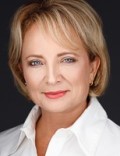 Pamela
Norton, CEO and Founder, Borsetta. Pamela
Norton, CEO and Founder, Borsetta.
Panelist
Bio: Pamela Norton
is an American entrepreneur and visionary who believes business and social
impact are interdependent. She currently is the Founder & CEO of Borsetta,
an AI hardware and software company which creates “intelligent assets” that
enable secure, frictionless, and decentralized commerce at the edge.
Borsetta's patent pending technology integrates physical real-world assets
with micro-chip technology, AI, machine learning, blockchain and cognitive
trust wallets to create secure frictionless commerce. As the fourth
industrial revolution unfolds, blurring the line between the physical and
digital worlds, and the demand for efficient, secure, smarter devices is
being pushed down to the device level, instead of relying on the cloud to do
all the work it means that more intelligence and transactions will be coming
to your devices.
|
|
|
|
Oracle
 |
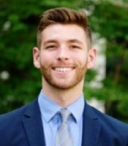 Chad
Blickenstaff, Enterprise Resource Manager, Oracle. Chad
Blickenstaff, Enterprise Resource Manager, Oracle.
Panelist.
Bio: Chad is an experienced
technology consultant with a demonstrated history of working within various
business development, data analytics, and blockchain departments graduated
from UCLA.
|
|
|
|
Intrinsic ID

|
 Dr.
Pim Tuyls, Founder and Chief Executive Officer, Intrinsic ID. Dr.
Pim Tuyls, Founder and Chief Executive Officer, Intrinsic ID.
Panelist
Bio: Pim Tuyls is CEO of Intrinsic ID, a company specializing in IoT
security technology. Before founding Intrinsic ID in 2008 he was at Philips
Research, where he was Principal Scientist and managed the cryptography
cluster. While there he initiated the work on Physical Unclonable Functions
(PUFs), which forms the basis of Intrinsic ID’s silicon fingerprinting
technology. Tuyls has a Ph.D. in mathematical physics from Leuven
University, holds more than 50 patents and is widely acknowledged for his
work in the field of security for embedded applications.
|
|
|
|
Palmchip
 |
 Jauher
Zaidi, Chairman & Chief Innovation Officer, Palmchip Corporation. Jauher
Zaidi, Chairman & Chief Innovation Officer, Palmchip Corporation.
Panelist.
Bio: Jauher expert in
Cyber Security, Storage and SoC design. He has over 33 years of experience
in executive management and entrepreneurship. He helped start several
hi-tech companies name a few, Palmchip, ESilicon, SandForce, Netvinci, and
Moobila. He has written and presented a number of articles and papers on
Cyber Security, SoC, IP business model, and future business and technology
trends. He has also participated in many system-on-chip panels, and is a
recognized expert in the area of SoC development. He invented the CoreFrame
SoC memory centric Architecture. Which has enabled over 2 billion SoCs. He
is a board of Adviser for Savant Company, a leader in International
System-on-Chip conferences. He holds several patents on Cyber Security, SoC
technology and infrastructure. The EE Times, a well-known industry
publication, named him twice among the 'Top 20 visionary CEOs’ in the world.
He is recipient of 2010 Terman Technology award for his Cloud computing
innovation. He was 1st place award out of 34 cloud Applications.
Specialties: Startup, Entrepreneurship, Management, Financing, SoC
Technology and Chip design, Sales and Marketing, Fund raising, Startups. IT
outsourcing, Cloud Computing, Mobile (IPhone, Android) applications.
|
|
|
|
|
Open To Everyone
Reception & Networking
|
|
|
|
|
17th International SoC
Conference Closed.
|
|
|
|
|
|
|
* * * * * * *
* SoC Conference Program is
subject to change. Savant Company Inc, SoC Conference Organizing
Committee, and Technical Advisory Board, reserve the rights to revise or modify
the SoC Conference agenda at its sole discretion.
Back To The Main SoC
Conference Page
Copyright © 2003-2019 by Savant Company Inc. All
Worldwide Rights Reserved. | |
|